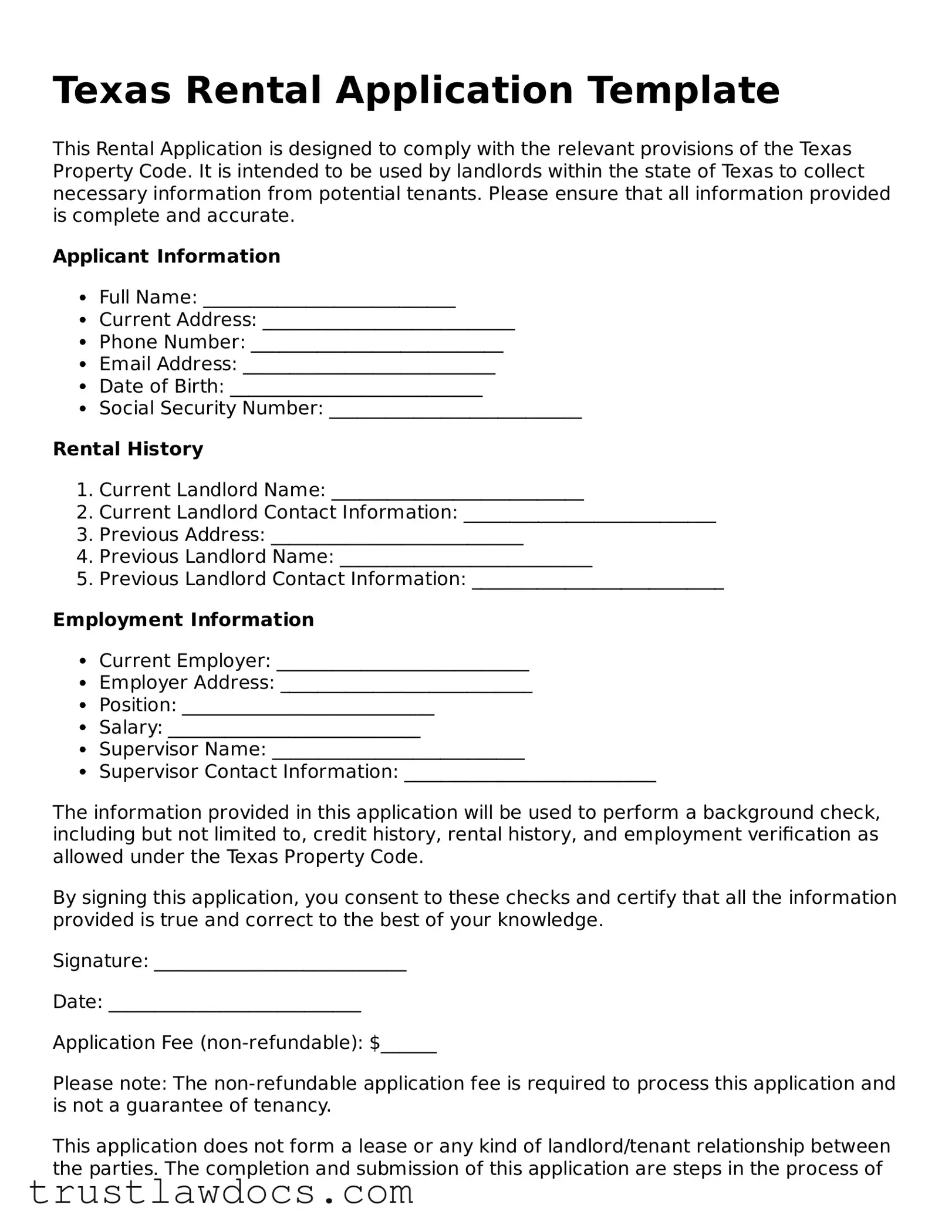1. What is a Texas Rental Application form?
A Texas Rental Application form is a document filled out by a potential tenant, which provides landlords with information necessary to assess the suitability of an applicant for tenancy. This form typically requests data on the applicant's rental history, employment, income, and references to ensure they can meet the terms of the lease agreement.
2. Who needs to fill out a Texas Rental Application form?
Any individual or family seeking to rent a residential property in Texas should complete a rental application form. This is a common first step in the leasing process, allowing landlords to review applicants before proceeding with lease agreements.
3. Is there a fee to submit a Texas Rental Application form?
Yes, in many cases, landlords or property managers charge an application fee. This fee covers the cost of processing the application, including running background and credit checks. Applicants should verify the amount with the landlord, as it can vary.
4. What information do I need to provide on the Texas Rental Application form?
Applicants are typically asked to provide personal information, including current and past addresses, employment history, income details, references, and consent to perform background and credit checks. Accurate and complete information will assist landlords in making their decisions.
5. How long does the approval process take after submitting the application?
The time frame can vary depending on the landlord or property management company. Usually, it takes between 24 to 72 hours for an application to be reviewed. Factors like the completeness of your application and the ease of verifying provided information can affect the timeline.
6. Can my application be denied, and will I be informed why?
Yes, an application can be denied based on factors such as rental history, credit score, income stability, or other criteria set by the landlord. Landlords are required to inform applicants of the reason for rejection, often in accordance with fair housing laws to ensure nondiscriminatory practices.
7. Is the application fee refundable if I decide not to rent or my application is denied?
Application fees are generally non-refundable, even if you decide against renting the property or your application is not approved. This fee is used to cover the cost of processing your application, including background and credit checks.
8. What happens after my Texas Rental Application form is approved?
Upon approval, the landlord will typically reach out to discuss the next steps, which usually involve signing a lease agreement, paying the security deposit, and discussing any other prerequisites to moving in, such as first month’s rent or utility setups.
9. Can I fill out a Texas Rental Application form online?
Yes, many landlords and property management companies offer the option to fill out the rental application form online for convenience. This can also expedite the submission and review process. However, it is important to ensure that the platform used is secure to protect your personal information.
10. What should I do if I require assistance in filling out my Texas Rental Application form?
If you need help or have questions about filling out your rental application, it's advisable to contact the landlord or property management company directly. They can provide guidance on their specific requirements or clarify any parts of the application that might be confusing.
